MaryAnn Bernal's Blog, page 225
October 27, 2014
History Trivia - Constantine the Great receives his Vision of the Cross
October 27

97 To placate the Praetorians of Germany, Roman emperor Nerva adopted Trajan, the Spanish-born governor of lower Germany, as his successor.
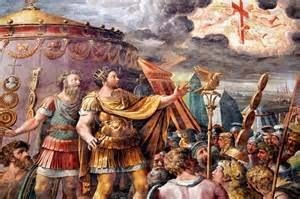
312 Constantine the Great is said to have received his famous Vision of the Cross.
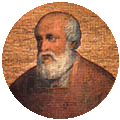
625 Honorius I Elected Pope. Honorius sponsored the restoration of Roman buildings, worked to Christianize the Anglo-Saxons, and reorganized the Visigoths. He was deeply involved in the controversies over monophysitism and monothelitism.
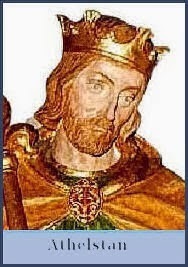
939 Athelstan died. Athelstan was the first West Saxon king to have effective rule over the whole of England. He was succeeded by Edmund I as King of England.

1401 Catherine of Valois was born. The neglected daughter of King Charles VI of France, Catherine married King Henry V of England and gave birth to his son, Henry VI. After her husband's untimely death, she began a relationship with Owen Tudor, and married him in secret. One of their sons was the father of King Henry VII.


97 To placate the Praetorians of Germany, Roman emperor Nerva adopted Trajan, the Spanish-born governor of lower Germany, as his successor.

312 Constantine the Great is said to have received his famous Vision of the Cross.

625 Honorius I Elected Pope. Honorius sponsored the restoration of Roman buildings, worked to Christianize the Anglo-Saxons, and reorganized the Visigoths. He was deeply involved in the controversies over monophysitism and monothelitism.

939 Athelstan died. Athelstan was the first West Saxon king to have effective rule over the whole of England. He was succeeded by Edmund I as King of England.

1401 Catherine of Valois was born. The neglected daughter of King Charles VI of France, Catherine married King Henry V of England and gave birth to his son, Henry VI. After her husband's untimely death, she began a relationship with Owen Tudor, and married him in secret. One of their sons was the father of King Henry VII.

Published on October 27, 2014 06:05
October 26, 2014
Mr. Chuckles stirs The Wizard’s Cauldron and conjures up New Jersey author Anabelle Bryant

The Wizard Speaks:
In the midst of crashing waves, howling winds, communication breakdown and the paranoid anxiety of BST's lost hour, the Wizphone finally managed to connect with the resplendent abode of Anabelle Bryant, popular New Jersey based historical romance author.
A published author for e-powerhouse Carina, and American rose-petal leviathan, Harlequin, Anabelle has been tipped by many insiders for a lofty position in the romance rankings and with her, er, striking and (some might say) saucy covers guaranteed to grab the attention of a rabid, intensely loyal, romance readership desperate for more tales of the Happy Ever After, who would bet against her?
As she reclined on her chaise longue making notes in the ledger for her latest Regency epic, we had a natter. Here's what she had to say.
Read More

Published on October 26, 2014 05:57
History Trivia - Alfred the Great dies
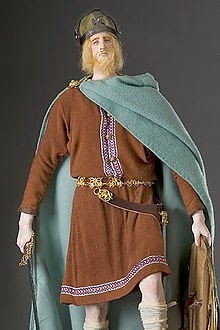
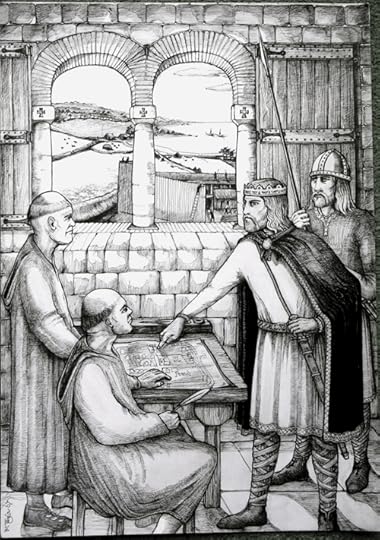 October 26, 899 King Alfred the Great died in Wessex. The actual year is not certain, but the year 901 as stated in the Anglo-Saxon Chronicle is suspect. How he died is unknown. He was originally buried temporarily in the Old Minster in Winchester, then moved to the New Minster. When the New Minster moved to Hyde, a little north of the city, in 1110, the monks transferred to Hyde Abbey along with Alfred's body and those of his wife and children. Soon after the dissolution of the abbey in 1539, during the reign of Henry VIII, the church was demolished, leaving the graves intact. The royal graves and many others were probably rediscovered by chance in 1788 when a prison was being constructed by convicts on the site. Coffins were stripped of lead, bones were scattered and lost, and no identifiable remains of Alfred have subsequently been found. Further excavations in 1866 and 1897 were inconclusive.
October 26, 899 King Alfred the Great died in Wessex. The actual year is not certain, but the year 901 as stated in the Anglo-Saxon Chronicle is suspect. How he died is unknown. He was originally buried temporarily in the Old Minster in Winchester, then moved to the New Minster. When the New Minster moved to Hyde, a little north of the city, in 1110, the monks transferred to Hyde Abbey along with Alfred's body and those of his wife and children. Soon after the dissolution of the abbey in 1539, during the reign of Henry VIII, the church was demolished, leaving the graves intact. The royal graves and many others were probably rediscovered by chance in 1788 when a prison was being constructed by convicts on the site. Coffins were stripped of lead, bones were scattered and lost, and no identifiable remains of Alfred have subsequently been found. Further excavations in 1866 and 1897 were inconclusive.

Published on October 26, 2014 05:34
October 25, 2014
Mysterious 4,000-Year-Old 'CD-ROM' Code Cracked
 Phaistos disk Side A
Phaistos disk Side A A fired-clay disk from the Second Millenium B.C. may finally have had some of its markings decoded.
The mysterious "Phaistos disk," found in 1908 in a palace called Phaistos on the island of Crete, contains symbols on both sides, in a spiral configuration meant to be read from the outside toward the center. It is estimated to date from about 1,700 B.C.
For better than a century, scientists have been trying to decode the meaning behind the symbols, and now Dr. Gareth Owens, of the Technological Educational Institute of Crete, says he has figured out some of its keywords and the general message it conveys.
PHOTOS: Egyptian Coffin Holds Bronze Age Artifacts
The disk contains 241 "picture" segments created from 45 individual symbols. Owens argues that the disk -- about 6 inches in diameter -- contains a prayer to the mother goddess of the Minoan era.
"The most stable word and value is 'mother,' and in particular the mother goddess of the Minoan era," said Owens, according to Archaeology News Network.
Using specific groups of symbols Owens says one side of the disk contains the translated wording "great lady of importance" while the other uses the expression "pregnant mother." One side, Owens says, is dedicated to a pregnant woman and the other to a woman giving birth.
Owens spent six years working on the code with a colleague at Oxford University and says about 90 percent of one side of the disk can now be deciphered. In a talk, he jokingly referred to it as the first Minoan "CD-ROM" for its shape and hard-coded data.
Discovery News

Published on October 25, 2014 06:24
The Real Dracula: Vlad the Impaler
by Elizabeth Palermo
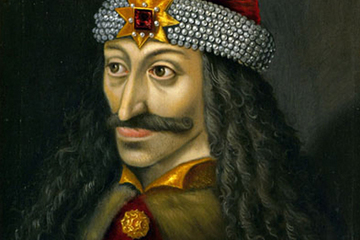
 This portrait of Vlad Tepes, painted in the early 16th century, hangs in the museum at Castle Ambras in Innsbruck, Austria.
This portrait of Vlad Tepes, painted in the early 16th century, hangs in the museum at Castle Ambras in Innsbruck, Austria.
Credit: Public domainFew names have cast more terror into the human heart than Dracula. The legendary vampire, created by author Bram Stoker for his 1897 novel of the same name, has inspired countless horror movies, television shows and other bloodcurdling tales of vampires.
Though Dracula may seem like a singular creation, Stoker in fact drew inspiration from a real-life man with an even more grotesque taste for blood: Vlad III, Prince of Wallachia or — as he is better known — Vlad the Impaler (Vlad Tepes), a name he earned for his favorite way of dispensing with his enemies.
Vlad III was born in 1431 in Transylvania, a mountainous region in modern-day Romania. His father was Vlad II Dracul, ruler of Wallachia, a principality located to the south of Transylvania. Vlad II was granted the surname Dracul ("dragon") after his induction into the Order of the Dragon, a Christian military order supported by the Holy Roman Emperor. [8 Grisly Archaeological Discoveries]
Situated between Christian Europe and the Muslim lands of the Ottoman Empire, Transylvania and Wallachia were frequently the scene of bloody battles as Ottoman forces pushed westward into Europe, and Christian Crusaders repulsed the invaders or marched eastward toward the Holy Land.
When Vlad II was called to a diplomatic meeting in 1442 with Sultan Murad II, he brought his young sons Vlad III and Radu along. But the meeting was actually a trap: All three were arrested and held hostage. The elder Vlad was released under the condition that he leave his sons behind.

[image error] This painting, "Vlad the Impaler and the Turkish Envoys," by Theodor Aman (1831-1891), hangs in the National Museum of Art of Romania.
Credit: Public domain
View full size imageYears of captivityUnder the Ottomans, Vlad and his younger brother were tutored in science, philosophy and the arts — Vlad also became a skilled horseman and warrior. According to some accounts, however, he may also have been imprisoned and tortured for part of that time, during which he would have witnessed the impalement of his the Ottomans' enemies.
The rest of Vlad's family, however, fared even worse: His father was ousted as ruler of Wallachia by local warlords (boyars) and was killed in the swamps near Balteni, Wallachia, in 1447. Vlad's older brother, Mircea, was tortured, blinded and buried alive.
Whether these events turned Vlad III Dracula ("son of the dragon") into a ruthless killer is a matter of historical speculation. What is certain, however, is that once Vlad was freed from Ottoman captivity shortly after his family's death, his reign of blood began. [7 Strange Ways Humans Act Like Vampires]
In 1453, the city of Constantinople fell to the Ottomans, threatening all of Europe with an invasion. Vlad was charged with leading a force to defend Wallachia from an invasion. His 1456 battle to protect his homeland was victorious: Legend holds that he personally beheaded his opponent, Vladislav II, in one-on-one combat.
Though he was now ruler of the principality of Wallachia, his lands were in a ruinous state due to constant warfare and the internal strife caused by feuding boyars. To consolidate power, Vlad invited hundreds of them to a banquet. Knowing his authority would be challenged, he had his guests stabbed and their still-twitching bodies impaled.
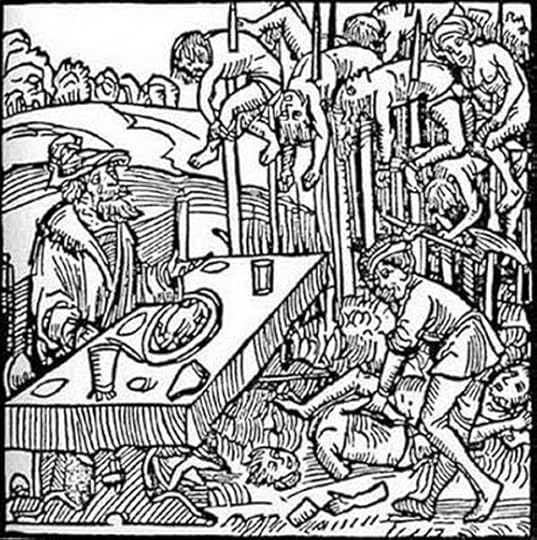
[image error] A woodcut from a 1499 pamphlet depicts Vlad III dining among the impaled corpses of his victims.
A woodcut from a 1499 pamphlet depicts Vlad III dining among the impaled corpses of his victims.
Credit: Public domain
View full size imageWhat is impaling?Impaling is a particularly gruesome form of torture and death: A wood or metal pole is inserted through the body either front to back, or vertically, through the rectum or vagina. The exit wound could be near the victim's neck, shoulders or mouth.
In some cases, the pole was rounded, not sharp, to avoid damaging internal organs and thereby prolong the suffering of the victim. The pole was then raised vertically to display the victim's torment — it could take hours or days for the impaled person to die.
Though Vlad is widely credited with bringing order and stability to Wallachia, his rule was undisputedly vicious: Dozens of Saxon merchants in Kronstadt, who were once allied with the boyars, were also impaled in 1459.
The Ottoman Turks were never far from Vlad's thoughts — or his borders. When diplomatic envoys had an audience with Vlad in 1459, the diplomats declined to remove their hats, citing a religious custom. Commending them on their religious devotion, Vlad ensured that their hats would forever remain on their heads by having the hats nailed to the diplomats' skulls.
During one of his many successful campaigns against the Ottomans, Vlad wrote to a military ally in 1462, "I have killed peasants, men and women, old and young, who lived at Oblucitza and Novoselo, where the Danube flows into the sea … We killed 23,884 Turks, without counting those whom we burned in homes or the Turks whose heads were cut by our soldiers ...Thus, your highness, you must know that I have broken the peace."
Vlad's victories over the invading Ottomans were celebrated throughout Wallachia, Transylvania and the rest of Europe — even Pope Pius II was impressed. But Vlad also earned a much darker reputation: On one occasion, he reportedly dined among a veritable forest of defeated warriors writhing on impaled poles. It's not known whether tales of Vlad III Dracula dipping his bread in the blood of his victims are true, but stories about his unspeakable sadism swirled throughout Europe.
Tens of thousands killedIn total, Vlad is estimated to have killed about 80,000 people through various means. This includes some 20,000 people who were impaled and put on display outside the city of Targoviste: The sight was so repulsive that the invading Ottoman Sultan Mehmed II, after seeing the scale of Vlad's carnage and the thousands of decaying bodies being picked apart by crows, turned back and retreated to Constantinople.
In 1476, while marching to yet another battle with the Ottomans, Vlad and a small vanguard of soldiers were ambushed, and Vlad was killed and beheaded — by most reports, his head was delivered to Mehmed II in Constantinople as a trophy to be displayed above the city's gates.
The Middle Ages were notoriously violent, and the name of Vlad III Dracula may have been a mere historical footnote were it not for an 1820 book by the British consul to Wallachia, William Wilkinson: "An Account of the Principalities of Wallachia and Moldavia: With Various Political Observations Relating to Them." Wilkinson delves into the history of the region, mentioning the notorious warlord Vlad Tepes.
Stoker, who never visited Vlad's homeland, was nonetheless known to have read Wilkinson's book. And if ever there were a historical figure to inspire a bloodthirsty, monstrous fictional character, Vlad III Dracula was one.
Live Science


 This portrait of Vlad Tepes, painted in the early 16th century, hangs in the museum at Castle Ambras in Innsbruck, Austria.
This portrait of Vlad Tepes, painted in the early 16th century, hangs in the museum at Castle Ambras in Innsbruck, Austria. Credit: Public domainFew names have cast more terror into the human heart than Dracula. The legendary vampire, created by author Bram Stoker for his 1897 novel of the same name, has inspired countless horror movies, television shows and other bloodcurdling tales of vampires.
Though Dracula may seem like a singular creation, Stoker in fact drew inspiration from a real-life man with an even more grotesque taste for blood: Vlad III, Prince of Wallachia or — as he is better known — Vlad the Impaler (Vlad Tepes), a name he earned for his favorite way of dispensing with his enemies.
Vlad III was born in 1431 in Transylvania, a mountainous region in modern-day Romania. His father was Vlad II Dracul, ruler of Wallachia, a principality located to the south of Transylvania. Vlad II was granted the surname Dracul ("dragon") after his induction into the Order of the Dragon, a Christian military order supported by the Holy Roman Emperor. [8 Grisly Archaeological Discoveries]
Situated between Christian Europe and the Muslim lands of the Ottoman Empire, Transylvania and Wallachia were frequently the scene of bloody battles as Ottoman forces pushed westward into Europe, and Christian Crusaders repulsed the invaders or marched eastward toward the Holy Land.
When Vlad II was called to a diplomatic meeting in 1442 with Sultan Murad II, he brought his young sons Vlad III and Radu along. But the meeting was actually a trap: All three were arrested and held hostage. The elder Vlad was released under the condition that he leave his sons behind.

[image error] This painting, "Vlad the Impaler and the Turkish Envoys," by Theodor Aman (1831-1891), hangs in the National Museum of Art of Romania.
Credit: Public domain
View full size imageYears of captivityUnder the Ottomans, Vlad and his younger brother were tutored in science, philosophy and the arts — Vlad also became a skilled horseman and warrior. According to some accounts, however, he may also have been imprisoned and tortured for part of that time, during which he would have witnessed the impalement of his the Ottomans' enemies.
The rest of Vlad's family, however, fared even worse: His father was ousted as ruler of Wallachia by local warlords (boyars) and was killed in the swamps near Balteni, Wallachia, in 1447. Vlad's older brother, Mircea, was tortured, blinded and buried alive.
Whether these events turned Vlad III Dracula ("son of the dragon") into a ruthless killer is a matter of historical speculation. What is certain, however, is that once Vlad was freed from Ottoman captivity shortly after his family's death, his reign of blood began. [7 Strange Ways Humans Act Like Vampires]
In 1453, the city of Constantinople fell to the Ottomans, threatening all of Europe with an invasion. Vlad was charged with leading a force to defend Wallachia from an invasion. His 1456 battle to protect his homeland was victorious: Legend holds that he personally beheaded his opponent, Vladislav II, in one-on-one combat.
Though he was now ruler of the principality of Wallachia, his lands were in a ruinous state due to constant warfare and the internal strife caused by feuding boyars. To consolidate power, Vlad invited hundreds of them to a banquet. Knowing his authority would be challenged, he had his guests stabbed and their still-twitching bodies impaled.

[image error]
 A woodcut from a 1499 pamphlet depicts Vlad III dining among the impaled corpses of his victims.
A woodcut from a 1499 pamphlet depicts Vlad III dining among the impaled corpses of his victims.Credit: Public domain
View full size imageWhat is impaling?Impaling is a particularly gruesome form of torture and death: A wood or metal pole is inserted through the body either front to back, or vertically, through the rectum or vagina. The exit wound could be near the victim's neck, shoulders or mouth.
In some cases, the pole was rounded, not sharp, to avoid damaging internal organs and thereby prolong the suffering of the victim. The pole was then raised vertically to display the victim's torment — it could take hours or days for the impaled person to die.
Though Vlad is widely credited with bringing order and stability to Wallachia, his rule was undisputedly vicious: Dozens of Saxon merchants in Kronstadt, who were once allied with the boyars, were also impaled in 1459.
The Ottoman Turks were never far from Vlad's thoughts — or his borders. When diplomatic envoys had an audience with Vlad in 1459, the diplomats declined to remove their hats, citing a religious custom. Commending them on their religious devotion, Vlad ensured that their hats would forever remain on their heads by having the hats nailed to the diplomats' skulls.
During one of his many successful campaigns against the Ottomans, Vlad wrote to a military ally in 1462, "I have killed peasants, men and women, old and young, who lived at Oblucitza and Novoselo, where the Danube flows into the sea … We killed 23,884 Turks, without counting those whom we burned in homes or the Turks whose heads were cut by our soldiers ...Thus, your highness, you must know that I have broken the peace."
Vlad's victories over the invading Ottomans were celebrated throughout Wallachia, Transylvania and the rest of Europe — even Pope Pius II was impressed. But Vlad also earned a much darker reputation: On one occasion, he reportedly dined among a veritable forest of defeated warriors writhing on impaled poles. It's not known whether tales of Vlad III Dracula dipping his bread in the blood of his victims are true, but stories about his unspeakable sadism swirled throughout Europe.
Tens of thousands killedIn total, Vlad is estimated to have killed about 80,000 people through various means. This includes some 20,000 people who were impaled and put on display outside the city of Targoviste: The sight was so repulsive that the invading Ottoman Sultan Mehmed II, after seeing the scale of Vlad's carnage and the thousands of decaying bodies being picked apart by crows, turned back and retreated to Constantinople.
In 1476, while marching to yet another battle with the Ottomans, Vlad and a small vanguard of soldiers were ambushed, and Vlad was killed and beheaded — by most reports, his head was delivered to Mehmed II in Constantinople as a trophy to be displayed above the city's gates.
The Middle Ages were notoriously violent, and the name of Vlad III Dracula may have been a mere historical footnote were it not for an 1820 book by the British consul to Wallachia, William Wilkinson: "An Account of the Principalities of Wallachia and Moldavia: With Various Political Observations Relating to Them." Wilkinson delves into the history of the region, mentioning the notorious warlord Vlad Tepes.
Stoker, who never visited Vlad's homeland, was nonetheless known to have read Wilkinson's book. And if ever there were a historical figure to inspire a bloodthirsty, monstrous fictional character, Vlad III Dracula was one.
Live Science

Published on October 25, 2014 06:16
Ancient City Ruled by Genghis Khan's Heirs Revealed
by Owen Jarus
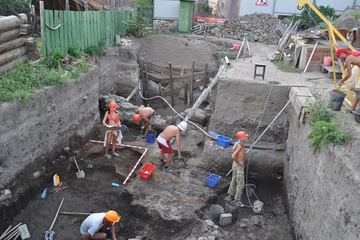
Archaeologists with the Saratov Regional Museum of Local Lore have uncovered part of the ancient city of Ukek, founded by the descendents of Genghis Khan.
Credit: Photo courtesy Dmitriy KubankinRemains of a 750-year-old city, founded by the descendents of Genghis Khan, have been unearthed along the Volga River in Russia.
Among the discoveries are two Christian temples one of which has stone carvings and fine ceramics.
The city’s name was Ukek and it was founded just a few decades after Genghis Khan died in 1227. After the great conqueror’s death his empire split apart and his grandson Batu Khan, who lived from 1205 to 1255, founded the Golden Horde (also called the Kipchak Khanate).The Golden Horde kingdom stretched from Eastern Europe to Central Asia and controlled many of the Silk Road trade routes that connected China to Medieval Europe.
This city of Ukek was built close to the khan's summer residence along the Volga River, something which helped it become prosperous. The name "Golden Horde" comes from the golden tent from which the khan was said to rule. [See Photos of the Medieval 'Golden Horde' City and Artifacts]Christian quarter
Archaeologists with the Saratov Regional Museum of Local Lore have discovered the Christian quarter of Ukek, shedding light on the Christian people who lived under the Khan's rule. Ukek was a multicultural city, where a variety of religious beliefs were practiced including Islam, Christianity and Shamanism.
While Christians did not rule the Golden Horde, the discoveries archaeologists made show that not all the Christians were treated as slaves, and people of wealth frequented the Christian quarter of the city.
"Some items belonging to local elite were found in the Christian district," Dmitriy Kubankin, an archaeologist with the Saratov Regional Museum of Local Lore, told Live Science in an email."Among other things, there is a Chinese glass hair pin, with a head shaped as a split pomegranate, and a fragment of a bone plate with a carved dragon image."
Stone temples
Among the discoveries are the basements of two Christian temples. In eastern Christianity churches are sometimes called temples.
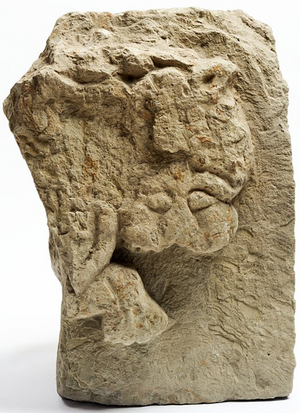
[image error] A bas relief showing a lion being clawed by a griffin was found in the remains of a Christian temple at the Ukek city site.
A bas relief showing a lion being clawed by a griffin was found in the remains of a Christian temple at the Ukek city site.
Credit: Photo courtesy Dmitriy Kubankin
View full size imageOne of the temples was built around 1280 and was destroyed in the early 14th century. "It was roofed with tiles and decorated with murals and stone carving[s], both, from the outside and inside," Kubankinsaid.
"The best-preserved bas relief (a type of stone carving) features a lion being clawed by a griffin," said Kubankin, noting that another carving depicts a cross.
Within the basement of the temple, archaeologists found the remains of goods that may have been stored by local merchants, including fine plates and bottles that were imported from the Byzantine Empire, Egypt or Iran. "Any church cellar was considered a safe place to store goods in it, therefore, merchants from the nearest neighborhood used to keep (objects) of sale there," Kubankin said.
After the first Christian temple was destroyed in the early 14th century, a second temple was built in 1330 and remained in use until about 1350. "Most probably, it was stone-walled and had a tile roof. A part of its foundation with the apse has been unearthed," Kubankin said.
The fall of Ukek
The city of Ukek did not last for long. During the 14th century, the Golden Horde began to decline, and in 1395 Ukek was attacked by a ruler named Tamerlane, a man out to build an empire of his own. He destroyed Ukek and took over much of the territory formerly ruled by the Golden Horde, dealing them a blow from which they would never recover.
Today modern-day buildings cover much of Ukek. "This hampers any research and prevents complete unearthing of the entire [site], because it extends over several private land plots," Kubankin said.
“Nevertheless, digging just in one site may lead to significant discoveries. Archaeological expeditions from the Saratov Regional Museum of Local Lore [have made] yearly excavations since 2005," said Kubankin, adding thatthese discoveries will soon be featured in a museum exhibition.
Kubankin presented the team's finds recently at the European Association of Archaeologists' annual meeting in Istanbul. The study is supported by the Saratov Regional Ministry of Culture, Russian Humanitarian Research Foundation grant (project 12-31-01246) and by the RIMKER Company.
Live Science

Archaeologists with the Saratov Regional Museum of Local Lore have uncovered part of the ancient city of Ukek, founded by the descendents of Genghis Khan.
Credit: Photo courtesy Dmitriy KubankinRemains of a 750-year-old city, founded by the descendents of Genghis Khan, have been unearthed along the Volga River in Russia.
Among the discoveries are two Christian temples one of which has stone carvings and fine ceramics.
The city’s name was Ukek and it was founded just a few decades after Genghis Khan died in 1227. After the great conqueror’s death his empire split apart and his grandson Batu Khan, who lived from 1205 to 1255, founded the Golden Horde (also called the Kipchak Khanate).The Golden Horde kingdom stretched from Eastern Europe to Central Asia and controlled many of the Silk Road trade routes that connected China to Medieval Europe.
This city of Ukek was built close to the khan's summer residence along the Volga River, something which helped it become prosperous. The name "Golden Horde" comes from the golden tent from which the khan was said to rule. [See Photos of the Medieval 'Golden Horde' City and Artifacts]Christian quarter
Archaeologists with the Saratov Regional Museum of Local Lore have discovered the Christian quarter of Ukek, shedding light on the Christian people who lived under the Khan's rule. Ukek was a multicultural city, where a variety of religious beliefs were practiced including Islam, Christianity and Shamanism.
While Christians did not rule the Golden Horde, the discoveries archaeologists made show that not all the Christians were treated as slaves, and people of wealth frequented the Christian quarter of the city.
"Some items belonging to local elite were found in the Christian district," Dmitriy Kubankin, an archaeologist with the Saratov Regional Museum of Local Lore, told Live Science in an email."Among other things, there is a Chinese glass hair pin, with a head shaped as a split pomegranate, and a fragment of a bone plate with a carved dragon image."
Stone temples
Among the discoveries are the basements of two Christian temples. In eastern Christianity churches are sometimes called temples.

[image error]
 A bas relief showing a lion being clawed by a griffin was found in the remains of a Christian temple at the Ukek city site.
A bas relief showing a lion being clawed by a griffin was found in the remains of a Christian temple at the Ukek city site.Credit: Photo courtesy Dmitriy Kubankin
View full size imageOne of the temples was built around 1280 and was destroyed in the early 14th century. "It was roofed with tiles and decorated with murals and stone carving[s], both, from the outside and inside," Kubankinsaid.
"The best-preserved bas relief (a type of stone carving) features a lion being clawed by a griffin," said Kubankin, noting that another carving depicts a cross.
Within the basement of the temple, archaeologists found the remains of goods that may have been stored by local merchants, including fine plates and bottles that were imported from the Byzantine Empire, Egypt or Iran. "Any church cellar was considered a safe place to store goods in it, therefore, merchants from the nearest neighborhood used to keep (objects) of sale there," Kubankin said.
After the first Christian temple was destroyed in the early 14th century, a second temple was built in 1330 and remained in use until about 1350. "Most probably, it was stone-walled and had a tile roof. A part of its foundation with the apse has been unearthed," Kubankin said.
The fall of Ukek
The city of Ukek did not last for long. During the 14th century, the Golden Horde began to decline, and in 1395 Ukek was attacked by a ruler named Tamerlane, a man out to build an empire of his own. He destroyed Ukek and took over much of the territory formerly ruled by the Golden Horde, dealing them a blow from which they would never recover.
Today modern-day buildings cover much of Ukek. "This hampers any research and prevents complete unearthing of the entire [site], because it extends over several private land plots," Kubankin said.
“Nevertheless, digging just in one site may lead to significant discoveries. Archaeological expeditions from the Saratov Regional Museum of Local Lore [have made] yearly excavations since 2005," said Kubankin, adding thatthese discoveries will soon be featured in a museum exhibition.
Kubankin presented the team's finds recently at the European Association of Archaeologists' annual meeting in Istanbul. The study is supported by the Saratov Regional Ministry of Culture, Russian Humanitarian Research Foundation grant (project 12-31-01246) and by the RIMKER Company.
Live Science

Published on October 25, 2014 06:10
History Trivia - Henry V victorious at Battle of Agincourt
October 25
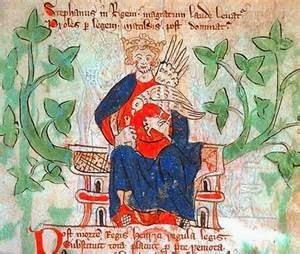
1154 King Stephen of Blois (grandson of William the Conqueror) died. After the death of King Henry I, Stephen took the throne, preventing Henry's daughter Matilda from ruling, and setting off a civil war.
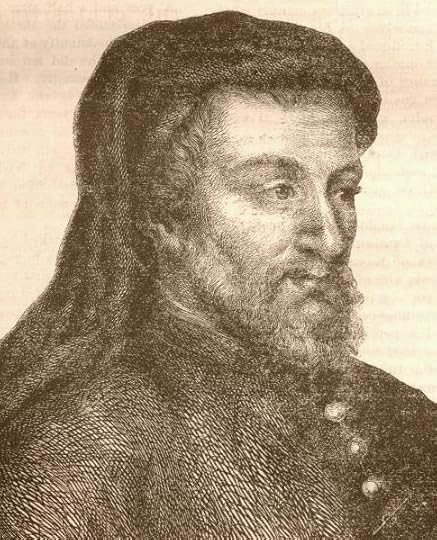
1400 Geoffrey Chaucer died at the age of 57. He was the first poet to be buried in Westminster Abbey.

1415, in Northern France, England led by Henry V won the Battle of Agincourt over France during the Hundred Years' War. Almost 6000 Frenchmen were killed while fewer than 400 were lost by the English.


1154 King Stephen of Blois (grandson of William the Conqueror) died. After the death of King Henry I, Stephen took the throne, preventing Henry's daughter Matilda from ruling, and setting off a civil war.

1400 Geoffrey Chaucer died at the age of 57. He was the first poet to be buried in Westminster Abbey.

1415, in Northern France, England led by Henry V won the Battle of Agincourt over France during the Hundred Years' War. Almost 6000 Frenchmen were killed while fewer than 400 were lost by the English.

Published on October 25, 2014 05:04
October 24, 2014
History Trivia - Carthage falls to Genseric and the Vandals
October 24
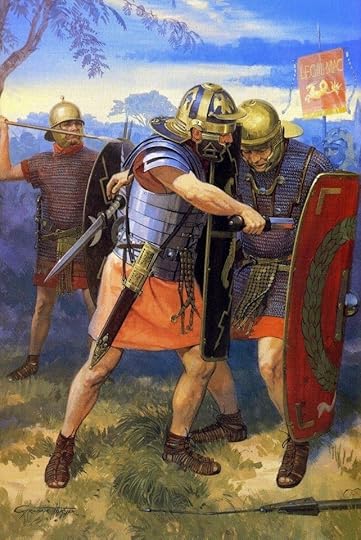
69 Second Battle of Bedriacum, forces under Antonius Primus, the commander of the Danube armies, loyal to Vespasian, defeated the forces of Emperor Vitellius.
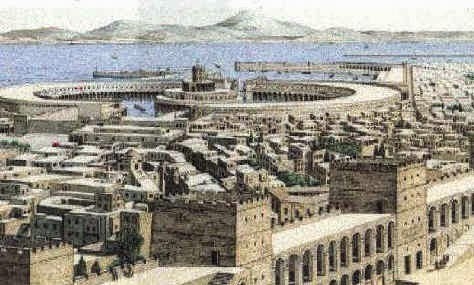
439 Carthage, the leading Roman city in North Africa, fell to Genseric and the Vandals.
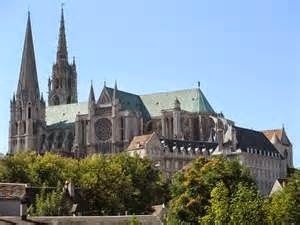
1260 The spectacular Cathedral of Chartres was dedicated in the presence of King Louis IX of France; the cathedral is now a UNESCO World Heritage Site.
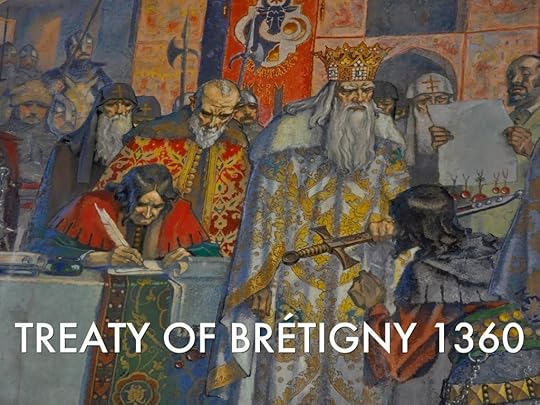
1360 The Treaty of Brétigny was ratified at Calais, marking the end of the first phase of the Hundred Years' War.
1375 Ki
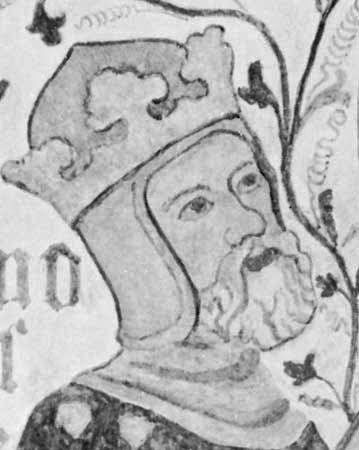 ng Valdemar IV died. He united Denmark after a brief period of domination by foreign rulers.
ng Valdemar IV died. He united Denmark after a brief period of domination by foreign rulers.
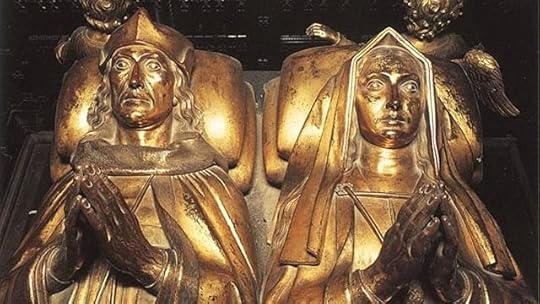
1537 Jane Seymour, the third wife of England's King Henry VIII, died after giving birth to Prince Edward. Prince Edward became King Edward VI.


69 Second Battle of Bedriacum, forces under Antonius Primus, the commander of the Danube armies, loyal to Vespasian, defeated the forces of Emperor Vitellius.

439 Carthage, the leading Roman city in North Africa, fell to Genseric and the Vandals.

1260 The spectacular Cathedral of Chartres was dedicated in the presence of King Louis IX of France; the cathedral is now a UNESCO World Heritage Site.

1360 The Treaty of Brétigny was ratified at Calais, marking the end of the first phase of the Hundred Years' War.
1375 Ki
 ng Valdemar IV died. He united Denmark after a brief period of domination by foreign rulers.
ng Valdemar IV died. He united Denmark after a brief period of domination by foreign rulers. 
1537 Jane Seymour, the third wife of England's King Henry VIII, died after giving birth to Prince Edward. Prince Edward became King Edward VI.

Published on October 24, 2014 05:31
October 23, 2014
Oldest High-Altitude Human Settlement Discovered in Andes
by Tia Ghose
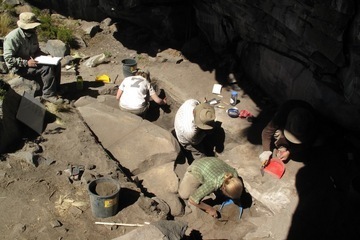
Archaeologists excavate a rockshelter in the Peruvian Andes that was used more than 12,000 years ago by human settlers.
Credit: Kurt Rademaker
The oldest-known evidence of humans living at extremely high altitudes has been unearthed in the Peruvian Andes, archaeologists say.
The sites — a rock shelter with traces of Ice Age campfires and rock art, and an open-air workshop with stone tools and fragments — are located nearly 14,700 feet (4,500 meters) above sea level and were occupied roughly 12,000 years ago.
The discovery, which is detailed today (Oct. 23) in the journal Science, suggests ancient people in South America were living at extremely high altitudes just 2,000 years after humans first reached the continent.
The findings also raise questions about how these early settlers physically adapted to sky-high living.
"Either they genetically adapted really, really fast — within 2,000 years — to be able to settle this area, or genetic adaptation isn't necessary at all," said lead study author Kurt Rademaker, who was a University of Maine visiting assistant professor in anthropology when he conducted the study. [See Images of the High-Altitude Ancient Settlement]
In follow-up work, the team plans to look for more evidence of occupation, such as human remains.
Coastal clue
The recent discovery of these high-altitude artifacts was made possible by work that started in the 1990s. At that time, Rademaker and his colleagues were studying a 13,000-year-old Paleoindian fishing settlement on the coast of Peru called Quebrada Jaguay. There, they found tools made of obsidian, a volcanic rock. There were no rivers or other geologic forces to carry the volcanic rock to the coast, and the closest volcanoes were in the Andes Mountains, roughly 100 miles (160 kilometers) away, said Rademaker, who is now a postdoctoral researcher at the University of Tübingen in Germany.
"This obsidian told us that early on, Paleoindians must have gone to the highlands," Rademaker told Live Science.
Rademaker and his colleagues analyzed the obsidian and determined that it likely came from around the Pucuncho Basin, an arid, cold plateau ringed by 21,000-foot-tall (6,400 meters) volcanoes, Rademaker said.
High life
After years of searching around the plateau, the researchers found a rock shelter with two alcoves, ceilings blackened with soot and walls decorated with rock art. The site also showed evidence of burnt detritus from ancient people's campsites. The rock shelter was used for thousands of years, starting around 12,400 years ago, and may have been a temporary base camp where herders sheltered from the rain, Rademaker said.
The coastal obsidian point likely came from a nearby outcropping, near what would've been an ancient open-air workshop at the time, the researchers said. The workshop contained hundreds of ancient tools, from spear points to scrapers to bifaces, or hand axes, some of which dated to 12,800 years old. The researchers also found large mammal bones from vicuña, the wild ancestors to alpacas, similar animals called guanacos, and taruca deer.
It's still not clear whether the people living along the coast and in the highlands were the same individuals, or whether they maintained trading networks across large distances, Rademaker said. [In Photos: Human Skeleton Sheds Light on First Americans]
Early settlers
The findings suggest people were living at high altitudes earlier than previously thought.
"People were really settled in and using this environment at the end of the ice age around 12,400 years ago," said Michael Waters, an anthropologist at Texas A&M University in College Station, who was not involved in the study. "They were going back and forth between the coast and this high-altitude site."
People in modern culture, perhaps because of stories of pioneers going west and getting trapped in the mountains (and eating each other), tend to see the highlands as poor living environments, said Bonnie Pitblado, an archaeologist at the University of Oklahoma, who was not involved in the study.
"There was this cultural stereotype that mountains are just impediments, that they get in the way," Pitblado told Live Science. But for prehistoric cultures, "mountains are these places with just the most amazing array of resources."
For instance, the highlands may have had hot springs and ice caves, glacial melt streams and other water sources, and the rock needed for stone tools, such as quartz, chert and obsidian, Pitblado said.
The findings also call into question just what is needed for people to live in high altitudes. At those locations, the air is much cooler and thinner, meaning it holds less oxygen than lower elevations. So, past studies have found that people living at high elevations have genetic adaptations that help them efficiently use oxygen from the thin mountain air, as well as mutations that can shield them from heart disease and strokes caused by chronic mountain sickness.
But the current research suggests that either people evolved these adaptations in just a few thousand years, or that these mutations weren't necessary for the first inhabitants.
After all, lowlanders like Rademaker live at high elevations all the time and do just fine, he said.
Live Science


Archaeologists excavate a rockshelter in the Peruvian Andes that was used more than 12,000 years ago by human settlers.
Credit: Kurt Rademaker
The oldest-known evidence of humans living at extremely high altitudes has been unearthed in the Peruvian Andes, archaeologists say.
The sites — a rock shelter with traces of Ice Age campfires and rock art, and an open-air workshop with stone tools and fragments — are located nearly 14,700 feet (4,500 meters) above sea level and were occupied roughly 12,000 years ago.
The discovery, which is detailed today (Oct. 23) in the journal Science, suggests ancient people in South America were living at extremely high altitudes just 2,000 years after humans first reached the continent.
The findings also raise questions about how these early settlers physically adapted to sky-high living.
"Either they genetically adapted really, really fast — within 2,000 years — to be able to settle this area, or genetic adaptation isn't necessary at all," said lead study author Kurt Rademaker, who was a University of Maine visiting assistant professor in anthropology when he conducted the study. [See Images of the High-Altitude Ancient Settlement]
In follow-up work, the team plans to look for more evidence of occupation, such as human remains.
Coastal clue
The recent discovery of these high-altitude artifacts was made possible by work that started in the 1990s. At that time, Rademaker and his colleagues were studying a 13,000-year-old Paleoindian fishing settlement on the coast of Peru called Quebrada Jaguay. There, they found tools made of obsidian, a volcanic rock. There were no rivers or other geologic forces to carry the volcanic rock to the coast, and the closest volcanoes were in the Andes Mountains, roughly 100 miles (160 kilometers) away, said Rademaker, who is now a postdoctoral researcher at the University of Tübingen in Germany.
"This obsidian told us that early on, Paleoindians must have gone to the highlands," Rademaker told Live Science.
Rademaker and his colleagues analyzed the obsidian and determined that it likely came from around the Pucuncho Basin, an arid, cold plateau ringed by 21,000-foot-tall (6,400 meters) volcanoes, Rademaker said.
High life
After years of searching around the plateau, the researchers found a rock shelter with two alcoves, ceilings blackened with soot and walls decorated with rock art. The site also showed evidence of burnt detritus from ancient people's campsites. The rock shelter was used for thousands of years, starting around 12,400 years ago, and may have been a temporary base camp where herders sheltered from the rain, Rademaker said.
The coastal obsidian point likely came from a nearby outcropping, near what would've been an ancient open-air workshop at the time, the researchers said. The workshop contained hundreds of ancient tools, from spear points to scrapers to bifaces, or hand axes, some of which dated to 12,800 years old. The researchers also found large mammal bones from vicuña, the wild ancestors to alpacas, similar animals called guanacos, and taruca deer.
It's still not clear whether the people living along the coast and in the highlands were the same individuals, or whether they maintained trading networks across large distances, Rademaker said. [In Photos: Human Skeleton Sheds Light on First Americans]
Early settlers
The findings suggest people were living at high altitudes earlier than previously thought.
"People were really settled in and using this environment at the end of the ice age around 12,400 years ago," said Michael Waters, an anthropologist at Texas A&M University in College Station, who was not involved in the study. "They were going back and forth between the coast and this high-altitude site."
People in modern culture, perhaps because of stories of pioneers going west and getting trapped in the mountains (and eating each other), tend to see the highlands as poor living environments, said Bonnie Pitblado, an archaeologist at the University of Oklahoma, who was not involved in the study.
"There was this cultural stereotype that mountains are just impediments, that they get in the way," Pitblado told Live Science. But for prehistoric cultures, "mountains are these places with just the most amazing array of resources."
For instance, the highlands may have had hot springs and ice caves, glacial melt streams and other water sources, and the rock needed for stone tools, such as quartz, chert and obsidian, Pitblado said.
The findings also call into question just what is needed for people to live in high altitudes. At those locations, the air is much cooler and thinner, meaning it holds less oxygen than lower elevations. So, past studies have found that people living at high elevations have genetic adaptations that help them efficiently use oxygen from the thin mountain air, as well as mutations that can shield them from heart disease and strokes caused by chronic mountain sickness.
But the current research suggests that either people evolved these adaptations in just a few thousand years, or that these mutations weren't necessary for the first inhabitants.
After all, lowlanders like Rademaker live at high elevations all the time and do just fine, he said.
Live Science

Published on October 23, 2014 12:12
New generation of archaeologists takes ancient Egypt into 21st century
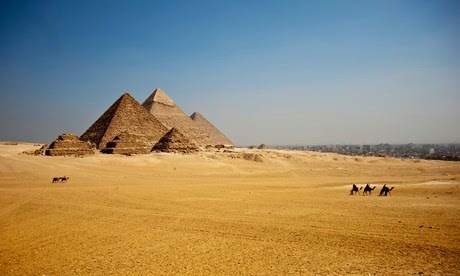 Tourists at the Pyramids of Giza. Until recently, few Egyptian experts had significant field training. Photograph: Steven Allan/Getty Images
Tourists at the Pyramids of Giza. Until recently, few Egyptian experts had significant field training. Photograph: Steven Allan/Getty Images Patrick Kingsley
Young experts bring fresh ideas to help reform institutions in charge of likes of Tutankhamun’s tomb and Giza pyramids
Five years ago, if archaeologists digging up pharaonic ruins in Egypt found any human bones, they would usually throw them away. “Most Egyptian archaeological missions looked at human remains as garbage,” said Afaf Wahba, a young official at Egypt’s antiquities ministry.
But osteology, the study of bones, is standard practice on digs outside Egypt – and Wahba wants Egyptian teams to follow suit. After a five-year campaign, each Egyptian province is now meant to have an osteologist, and Wahba hopes the ministry will found its own osteology department. But, as she put it: “I am struggling to inform people in the SCA [the ministry’s governing body] that human remains are very important.”
Wahba’s mission is one example of a generational shift that optimists hope can slowly reform Egypt’s bureaucratic state institutions, not least its ministry of state for antiquities (MSA). The MSA has ultimate jurisdiction over arguably the planet’s most impressive collection of monuments and museums, hundreds of sites including the tomb of Tutankhamun, the mosques of medieval Cairo, and – in the Giza pyramids – the last remaining wonder of the ancient world.
“It’s a bit like English Heritage, the British Museum and a university research department rolled into one,” said Chris Naunton, the head of the Egypt Exploration Society (EES), a British charity that supports Egyptian archaeology.
Yet despite its power and potential, the ministry – like many Egyptian institutions – is often accused of being a quagmire of paperwork. Foreign archaeologists complain they sometimes can’t import the equipment they need, or export rock samples for analysis. Taking such samples to foreign laboratories is banned and, as a result, local digs are overlooked by international donors, who prioritise projects with access to the latest research techniques. “Bureaucracy is such a monster in Egypt,” said Giulio Lucarini, an archaeology professor whose digs are among those affected by the ban based in Cambridge.
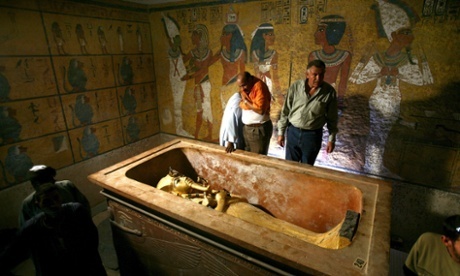 Officials look at the golden sarcophagus of the Tutankhamun after the mummy of the boy king was taken out of its sarcophagus and displayed to the public in 2007. Photograph: Mike Nelson/EPA Local archaeologists have their own frustrations. Many want better field training, more opportunities for promotion, and say their ideas for reform are rarely listened to. “If you want to do something, you go to your boss, and from his boss to another boss – and so on to get permission,” said Moamen Saad, another young ministry official, of the process of starting a new project.
Officials look at the golden sarcophagus of the Tutankhamun after the mummy of the boy king was taken out of its sarcophagus and displayed to the public in 2007. Photograph: Mike Nelson/EPA Local archaeologists have their own frustrations. Many want better field training, more opportunities for promotion, and say their ideas for reform are rarely listened to. “If you want to do something, you go to your boss, and from his boss to another boss – and so on to get permission,” said Moamen Saad, another young ministry official, of the process of starting a new project.Decision-making is opaque. Activists say Egypt’s oldest pyramid, the Djoser at Saqqara, has been ruined by a ministry-sponsored restoration effort. The ministry denies the charge – but without independent arbitration, no one can know who is right.
According to Naunton, “there is very little mechanism for criticising the ministry for what it does. And that’s not very healthy”. When you’re talking about a big government institution, you should be able to say: maybe there’s another way of doing that.
But hope is on the horizon. A new generation of officials, a new approach to archaeology at Egypt’s leading state university and a new ministry leadership has given archaeologists hope that things may gradually change. Wahba and Saad personify the new broom. Wahba’s enthusiasm for osteology could shake up the ministry’s approach to research.
Saad wants to improve the practical education given to young ministry employees. Archaeology courses at Egyptian universities are theory-based, so new recruits arrive at the ministry with no experience of archaeological digs. Apart from a week-long course in the Sinai desert, the MSA does little to beef up their skills.
Saad wants to change all that. In 2012, while working at the temples of Luxor, he and local colleagues set up their own field training school, giving 100 officials a new set of skills they would have found hard to come by elsewhere.
Now Saad wants to replicate the scheme elsewhere. “This is my dream project – to do it again and again,” he said. “Lots of colleagues gave me a hand. Now I want to give a hand to my colleagues.”
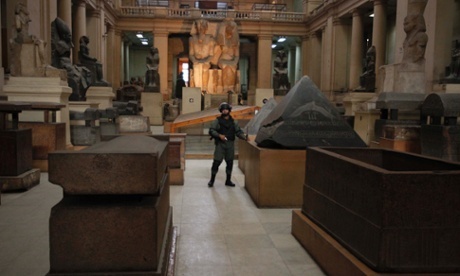 A member of the Egyptian special forces stands guard in the Egyptian Museum in Cairo in January 2011 after would-be looters broke in. Photograph: Tara Todras-Whitehill/AP Then there’s 33-year-old Mohamed Gamal, formerly a curator at the Grand Egyptian Museum – one of two unfinished Egyptology museums that are being built to supplement the cluttered, decades-old Egyptian museum in Tahrir Square. Like many observers, Gamal feels it isn’t yet clear how the three museums will complement each other – so he is developing a masterplan that, if adopted, may finally give each of the trio a clear and unique mandate.
A member of the Egyptian special forces stands guard in the Egyptian Museum in Cairo in January 2011 after would-be looters broke in. Photograph: Tara Todras-Whitehill/AP Then there’s 33-year-old Mohamed Gamal, formerly a curator at the Grand Egyptian Museum – one of two unfinished Egyptology museums that are being built to supplement the cluttered, decades-old Egyptian museum in Tahrir Square. Like many observers, Gamal feels it isn’t yet clear how the three museums will complement each other – so he is developing a masterplan that, if adopted, may finally give each of the trio a clear and unique mandate.“A very simple question that is always asked is: why do you have two new museums in the same city? What will you do with the [old] Egyptian museum? During the last few years, no one from the Egyptian side had a good answer,” said Gamal. “So the proposal I’m working on I hope will have the answer.”
Gamal, Saad and Wahba are not alone. They reckon they are part of a group of about 60 up-and-comers, all intent on helping the ministry reach its potential. “They have an awareness,” said the EES’s Naunton, “that there is an opportunity – if they and others like them can get into the right positions in the ministry – to genuinely reform things, to make sure that the ministry is dealing in the best way with all the challenges it faces.”
Groups including the EES are giving them a hand. In partnership with the ministry, the EES awards scholarships to some of the MSA’s high flyers, taking six young officials – including Gamal and Wahba – to Britain for workshops with leading British curators, conservators and archaeologists, and access to some of the world’s best archaeological libraries. In Egypt itself, the Ancient Egypt Research Associates (Aera), an American conservation group, has spent the past decade giving field training to Egyptian archaeologists – providing the latest generation, including Moamen Saad, with an unprecedented set of field skills. This year, this change in approach spread to Cairo university, where the new head of conservation, Mostafa Attia, introduced field training for the first time.
Foreign groups such as Aera and EES are aware of the balance they, as foreigners, must strike while intervening in an industry in which colonialism casts a long shadow. But they argue the guidance they give makes Egypt less dependent on foreign expertise. Foreign archaeologists say that five years ago, before Aera’s workshops had made much headway, you wouldn’t have been able to staff a dig exclusively with competent local archaeologists – most Egyptians didn’t have the training.
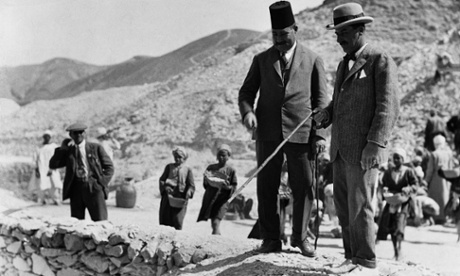 The British archaeologist Howard Carter at the tomb of Tutankhamun, in 1923. Photograph: Hulton-Deutsch Collection/CORBIS Now that’s changing: for the first time, digs are being staffed by Egyptians alone. “And that’s how it should be,” said Naunton. “It should be people like Moamen and Afaf who are running the foremost archaeological projects in Egypt – but until recently that hasn’t been possible, which has given the whole thing a very colonial feel.”
The British archaeologist Howard Carter at the tomb of Tutankhamun, in 1923. Photograph: Hulton-Deutsch Collection/CORBIS Now that’s changing: for the first time, digs are being staffed by Egyptians alone. “And that’s how it should be,” said Naunton. “It should be people like Moamen and Afaf who are running the foremost archaeological projects in Egypt – but until recently that hasn’t been possible, which has given the whole thing a very colonial feel.”For its part, the ministry says it wants to modernise. It positively welcomes projects such as the Aera field schools, and the EES scholarships, according to Hisham Elleithy, who heads a department within the MSA. “When they come back from their scholarships,” he said, “they can transfer their experience to their colleagues in the museums and the sites.”
If there are failings, they’re often caused by problems beyond the ministry’s control, Elleithy added. The 2011 uprising caused a collapse in tourism, which reduced the ministry’s revenuesby 95%. As a result, it has struggled to pay its 44,000 employees, let alone embark on grand projects of reform. The looting of hundreds of archaeological sites, meanwhile, is due to a security vacuum caused by the uprising.
The newly appointed antiquities minister, Mamdouh Damaty, is said to be refreshingly open to new ideas, and has already appointed fresh faces to key positions. “Professor Damaty has a lot of great ideas,” said Elleithy. “[He’s] encouraging the younger generation … choosing the right persons for the right places. Their age doesn’t matter – it’s their experience and ideas.”
Young officials hope this early promise results in real change. “Trust the new generation,” saidSaad, in an appeal that will resonate across post-revolutionary Egypt. “Be flexible, listen to them and their ideas … Let’s test it and if it’s OK, let’s continue with it. But don’t from the beginning say no.” The Guardian

Published on October 23, 2014 12:06



